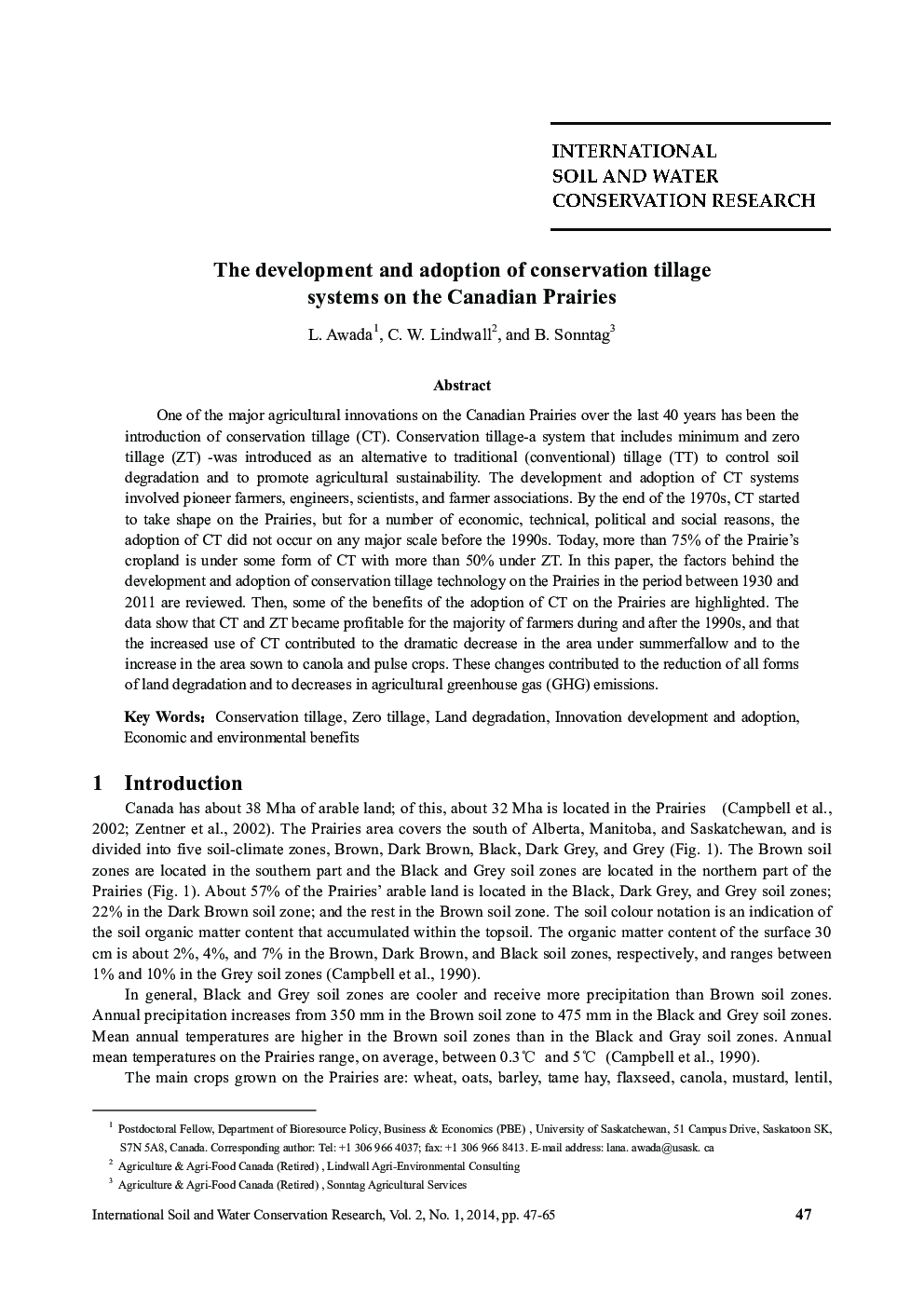| کد مقاله | کد نشریه | سال انتشار | مقاله انگلیسی | نسخه تمام متن |
|---|---|---|---|---|
| 4452163 | 1312029 | 2014 | 19 صفحه PDF | دانلود رایگان |
One of the major agricultural innovations on the Canadian Prairies over the last 40 years has been the introduction of conservation tillage (CT). Conservation tillage-a system that includes minimum and zero tillage (ZT) -was introduced as an alternative to traditional (conventional) tillage (TT) to control soil degradation and to promote agricultural sustainability. The development and adoption of CT systems involved pioneer farmers, engineers, scientists, and farmer associations. By the end of the 1970s, CT started to take shape on the Prairies, but for a number of economic, technical, political and social reasons, the adoption of CT did not occur on any major scale before the 1990s. Today, more than 75% of the Prairie's cropland is under some form of CT with more than 50% under ZT. In this paper, the factors behind the development and adoption of conservation tillage technology on the Prairies in the period between 1930 and 2011 are reviewed. Then, some of the benefits of the adoption of CT on the Prairies are highlighted. The data show that CT and ZT became profitable for the majority of farmers during and after the 1990s, and that the increased use of CT contributed to the dramatic decrease in the area under summerfallow and to the increase in the area sown to canola and pulse crops. These changes contributed to the reduction of all forms of land degradation and to decreases in agricultural greenhouse gas (GHG) emissions.
Journal: International Soil and Water Conservation Research - Volume 2, Issue 1, March 2014, Pages 47–65
